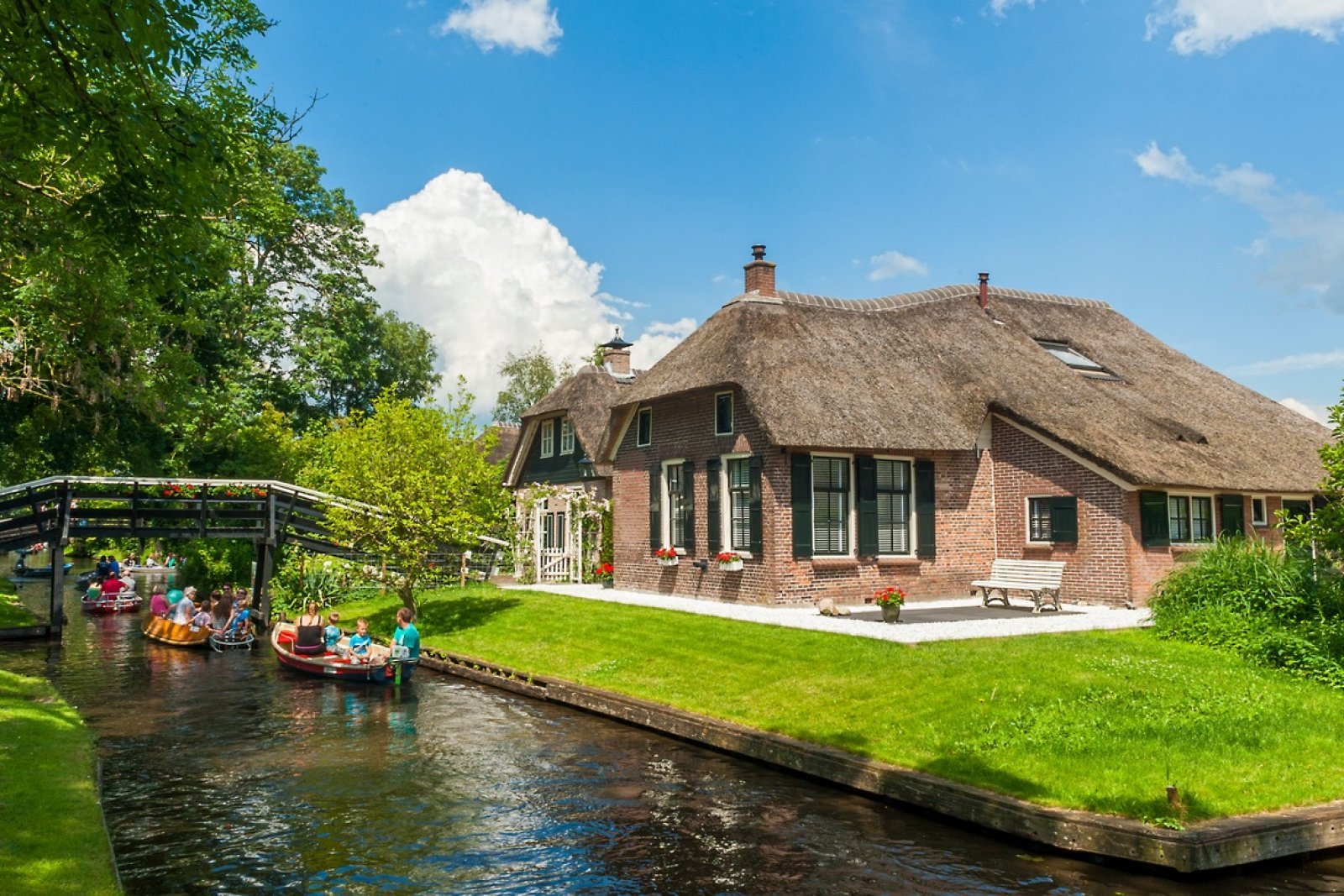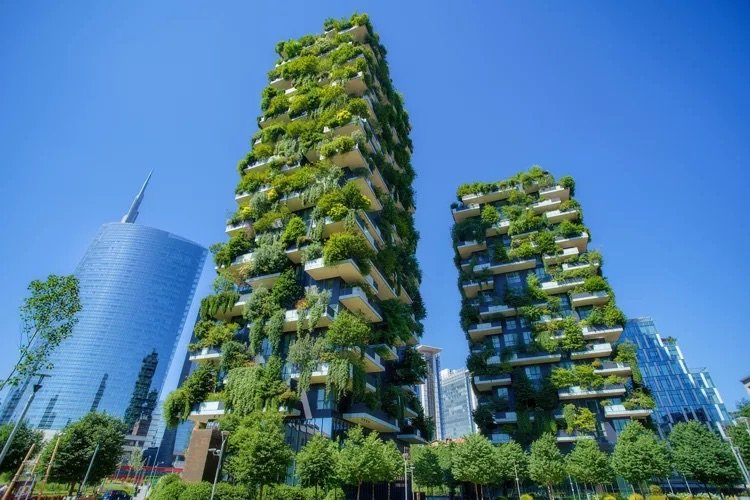Apr 13, 2023
3 Ways to Integrate Agriculture into Architectural Projects

Credit: Gianni Dotti.
Written by: Niko Simos
April 13, 2023

A rendering of the hydroponically-engineered Hanging Gardens of Babylon in 600 BCE. Credit: EZ Gro Gardens.
As concerns about food security, sustainability, and urbanization continue to grow, more and more architects are exploring ways to integrate agriculture into their projects. Whether it's a community garden on a residential development, a rooftop farm on a commercial building, or a green wall in a public space, incorporating agriculture into architectural design can bring numerous benefits, from providing fresh food to creating more sustainable and resilient built environments.
By incorporating green spaces, edible landscapes, and other agricultural elements into designs, architects can create spaces that not only look beautiful but also contribute to the health and well-being of the people who use them.
However, to achieve these benefits, architects need to have a solid understanding of the principles and practices of agriculture, as well as the challenges and opportunities that come with integrating agriculture into built environments. In this blog post, we provide an introduction to agricultural integration, drawing on the expertise of professionals in both the architectural and agricultural fields.
Understanding the Benefits of Agricultural Integration:
Incorporating agriculture into architectural projects can bring numerous benefits, both for the environment and for people's well-being. One of the most significant benefits is promoting food security. With the world's population projected to reach 9.7 billion by 2050 with 80% of all the food produced consumed in urban areas, integrating agriculture into urban areas can help combat food insecurity by ensuring that people have immediate access to fresh, healthy food.
_1360x785_1600x1067.jpg)
Giethoorn, an idyllic village where countless thatched farms have been built on small peat islands connected by bridges amidst lakes, reed beds, and forests. Credit: Holland Global Tourism.
In addition to promoting food security, agricultural integration can also improve air and water quality. Plants absorb carbon dioxide and other pollutants, and green spaces can help reduce heat island effects, which can lead to better air quality and lower energy use. Integrating agriculture into built environments can also increase biodiversity by providing habitats for insects, birds, and other wildlife. Finally, incorporating agriculture into architectural projects can enhance social connections by bringing people together around shared interests in gardening, cooking, and healthy eating.
Community gardens, in particular, can create opportunities for people from diverse backgrounds to connect and collaborate, fostering a sense of community and social cohesion.
When designing a community garden, it is important to consider the needs and interests of the local community. The garden should be accessible and welcoming to everyone, regardless of their age, ability, or gardening experience. This may involve designing raised garden beds or wheelchair-accessible paths.

Brooklyn Grange’s rooftop farm in NYC. Credit: Brooklyn Grange.
Community gardens can also offer education and hands-on experience about sustainable gardening practices and the benefits of locally-grown food. Interpretive signage and educational programming can be incorporated into the design to engage and inform visitors. In addition to providing a space for people to grow food, community gardens can also serve as gathering spaces for events and activities. Seating areas, shade structures, and outdoor kitchens can be incorporated into the design to encourage community members to spend time in the garden and socialize with one another.
Community gardens can be integrated into a variety of public spaces, such as parks, schools, and community centers. They can be designed as standalone spaces or incorporated into larger projects, such as mixed-use developments or urban revitalization projects.
Innovative Approaches to Agricultural Integration

One approach of a vertical garden as seen in Milan: The Bosco Verticale, two residential towers. Credit: Discover Italy.
1) Vertical Gardens
One approach to agricultural integration is through the use of vertical gardens, which use walls or other vertical surfaces to grow plants. Vertical gardens can be used to create visual displays, purify the air, and provide food or habitat for wildlife. Architects can use a variety of systems to create vertical gardens, including hydroponic or aeroponic systems, soil-based systems, and modular or prefabricated systems.
2) Green Roofs and Walls
Another approach is green roofs, which use rooftops to grow plants. Green roofs involve planting vegetation on the roof of a building, which can provide a variety of benefits such as insulation, stormwater management, and improved air quality. They can also provide habitat for wildlife and create spaces for people to gather and enjoy the outdoors.
Green walls, on the other hand, involve covering the walls of a building with vegetation. This technique can be used to create vertical gardens, which are becoming increasingly popular in urban areas. Green walls can also provide insulation and improve air quality, while creating a visually stunning addition to a building's design.
Both green roofs and walls can be incorporated into a variety of building types, from residential to commercial and even industrial. In addition to their environmental benefits, they can also provide aesthetic appeal and add value to a building.

From Agritecture Studio’s first cohort, Jorge Gerini used Agritecture Designer to derive realistic financial calculations towards his plan to create a community-oriented model of urban space in Mexico, centered around resilient food production and greenspace.
When designing projects that integrate agriculture, it's crucial to prioritize sustainability. Using sustainable materials is one way to do this. Architects can incorporate materials such as reclaimed wood to build their community gardens and spacing beds, and recycled plastic for different hydroponic systems. By using these materials, architects can reduce their projects' environmental impact and promote a more sustainable future.
3) Vertical Farming
Vertical farming is an innovative approach to indoor agriculture using hydroponics and LEDs. Architects can consider incorporating vertical farming systems into their projects, either as standalone structures or as part of a larger building.
By utilizing vertical farming systems, architects can create a sustainable source of fresh produce within the building itself, reducing the carbon footprint associated with transporting food from distant locations.
In addition, vertical farming can be integrated with other sustainable systems, such as solar panels. This makes it a viable option for buildings aiming to achieve net-zero energy consumption or LEED certification.
.jpg)
Overall, incorporating vertical farming into architectural designs is a promising way to enhance sustainability and promote a healthier lifestyle. Architects can work with experts in agriculture and vertical farming to ensure that their designs are optimized for crop yields, energy efficiency, and sustainability.
By exploring these innovative approaches to agricultural integration, architects can find new ways to create beautiful, productive spaces that contribute to the health and well-being of people and the planet.
Deepening understanding of urban agriculture
Architects can gain further knowledge on urban agriculture and various indoor growing structures through Agritecture Designer’s online classes. These classes cover the basics of these agricultural systems and provide more information on technology, climate requirements for plants, yields, and other useful information.
In addition, Agritecture Designer offers a modeling tool that can help architects estimate the initial and operational costs, as well as the ROI and yields of a potential greenhouse or vertical farm that they can design in any location, including urban, rooftop, or peri-urban areas. This tool can be invaluable for architects who want to incorporate agriculture into their projects but need to justify the costs to their clients.
By taking advantage of Agritecture Designer's online classes and modeling tools, architects can gain the knowledge and skills they need to successfully integrate agriculture into their projects and create more sustainable and livable communities.
